Abstract
This paper proposes that intimacy is a process that emerges from a sequence of events in which behavior vulnerable to interpersonal punishment is reinforced by the response of another person. These intimate events result in an increase in the probability of behavior vulnerable to interpersonal punishment in the presence of the reinforcing partner. The process results in intimate partnership formation and reports of feeling intimate. In addition to positing an operant process integrating the various components of intimacy, the theory also posits that the punishment of interpersonally vulnerable behavior is an integral aspect of intimate partnership formation and that intimate partnerships can develop that reinforce behavior that may be destructive both to the individual and to others.
Keywords: intimacy, behavioral interpretation, couples interaction, couples research
Full text
PDF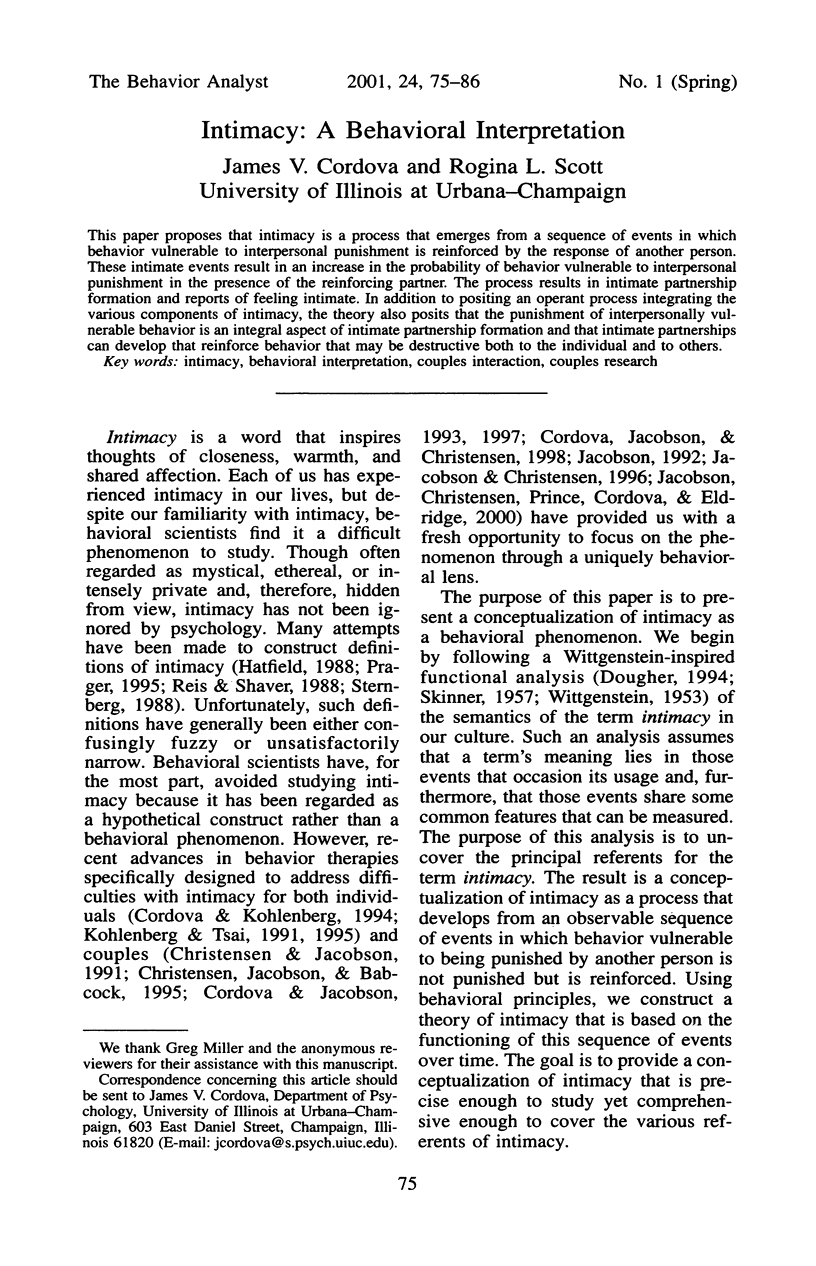
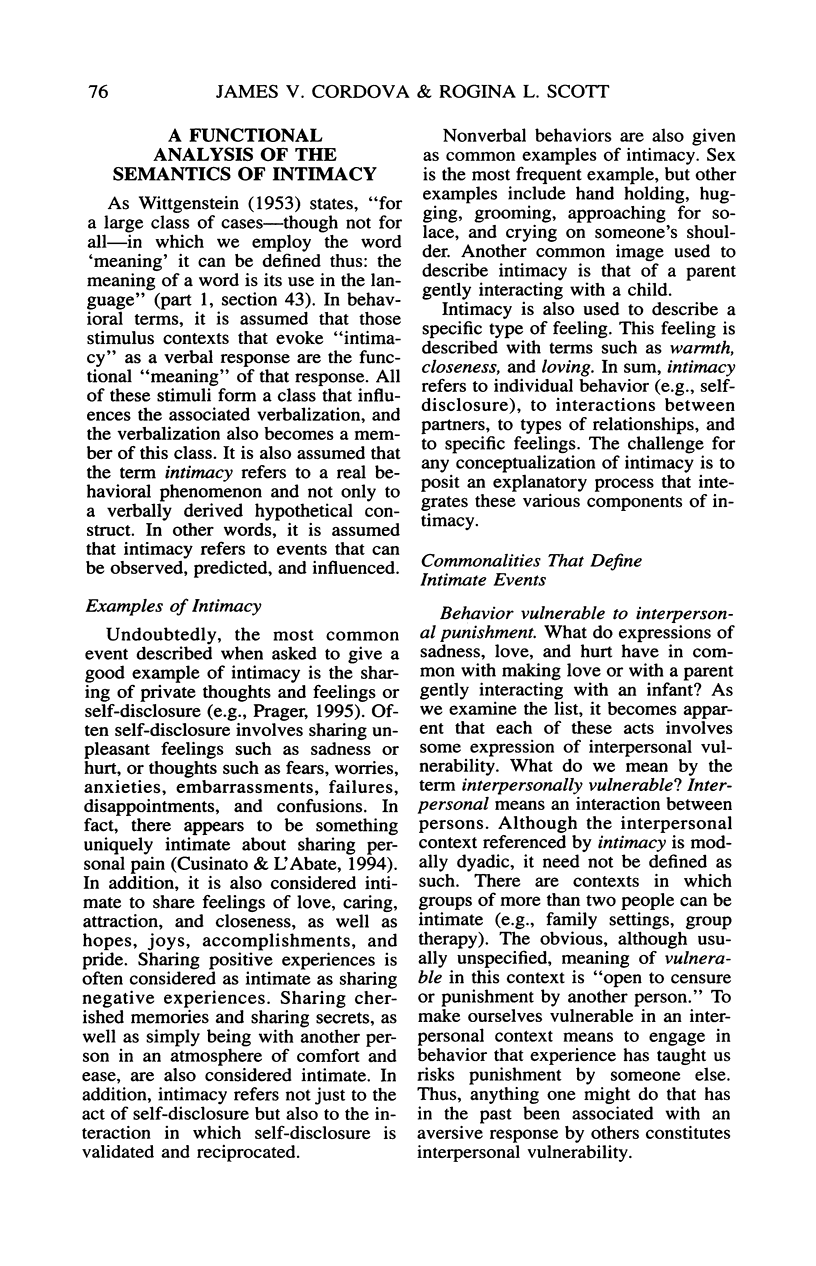
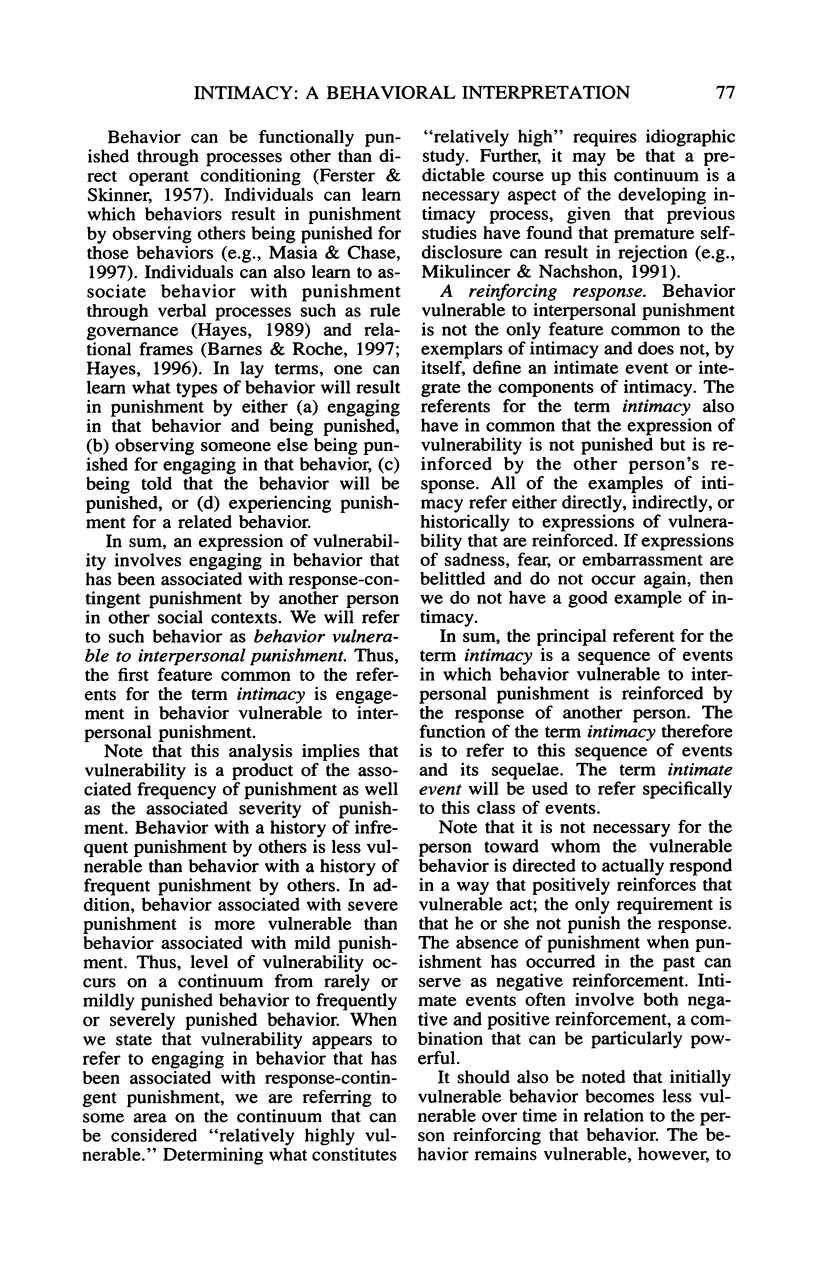

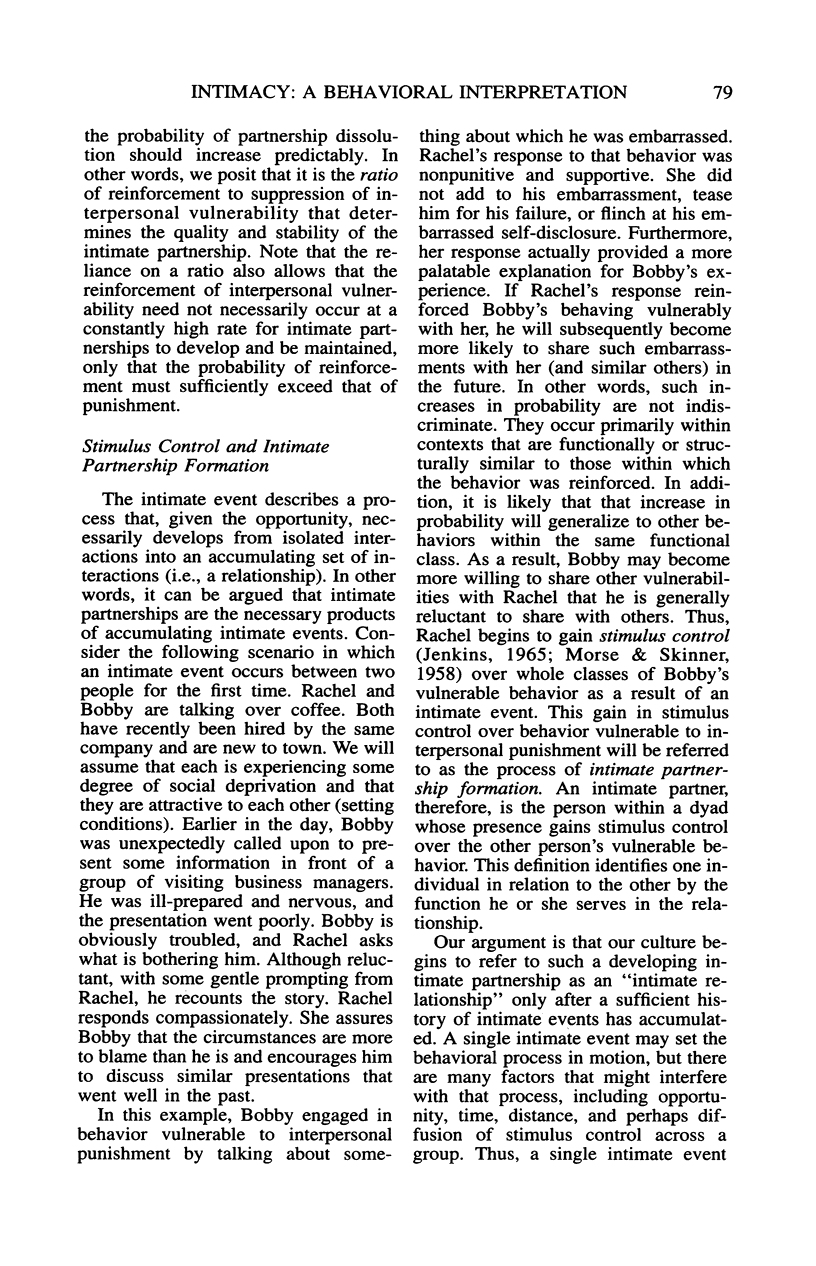
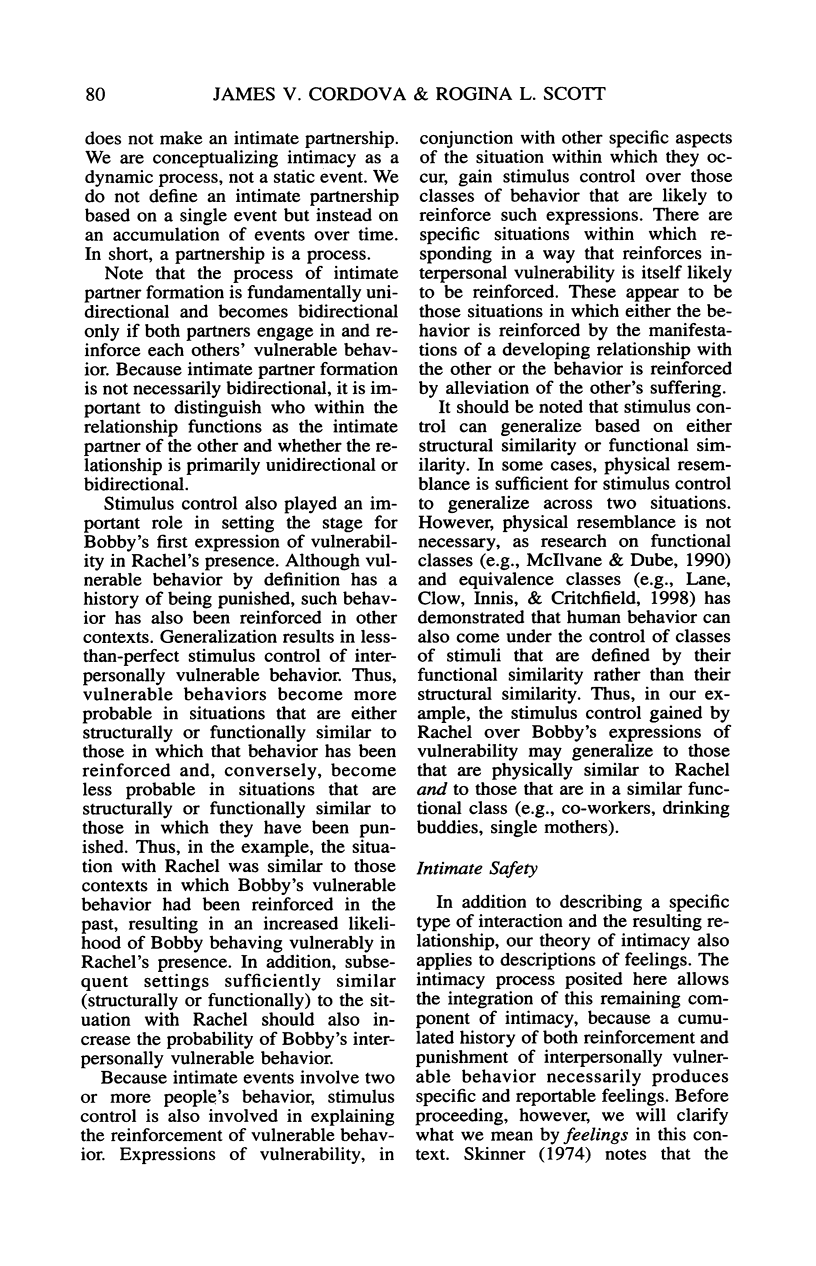
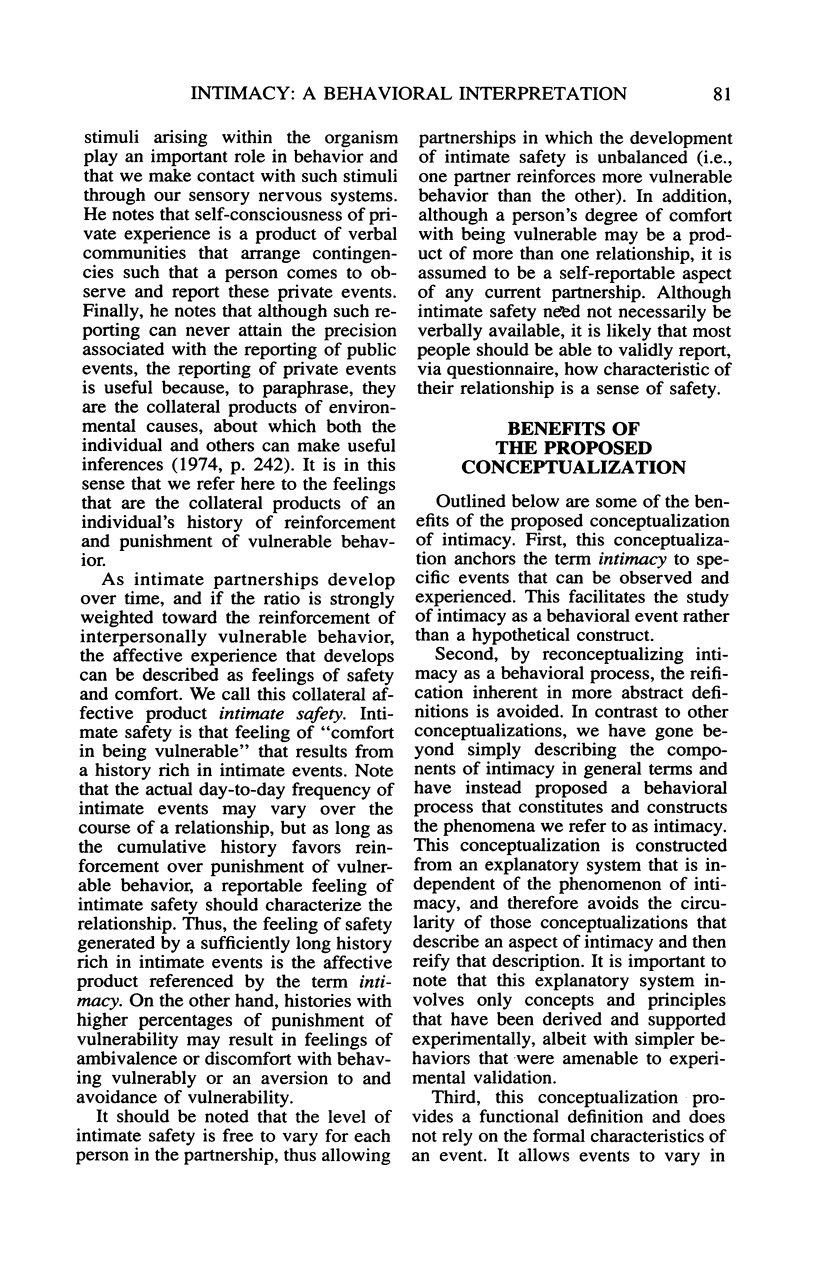
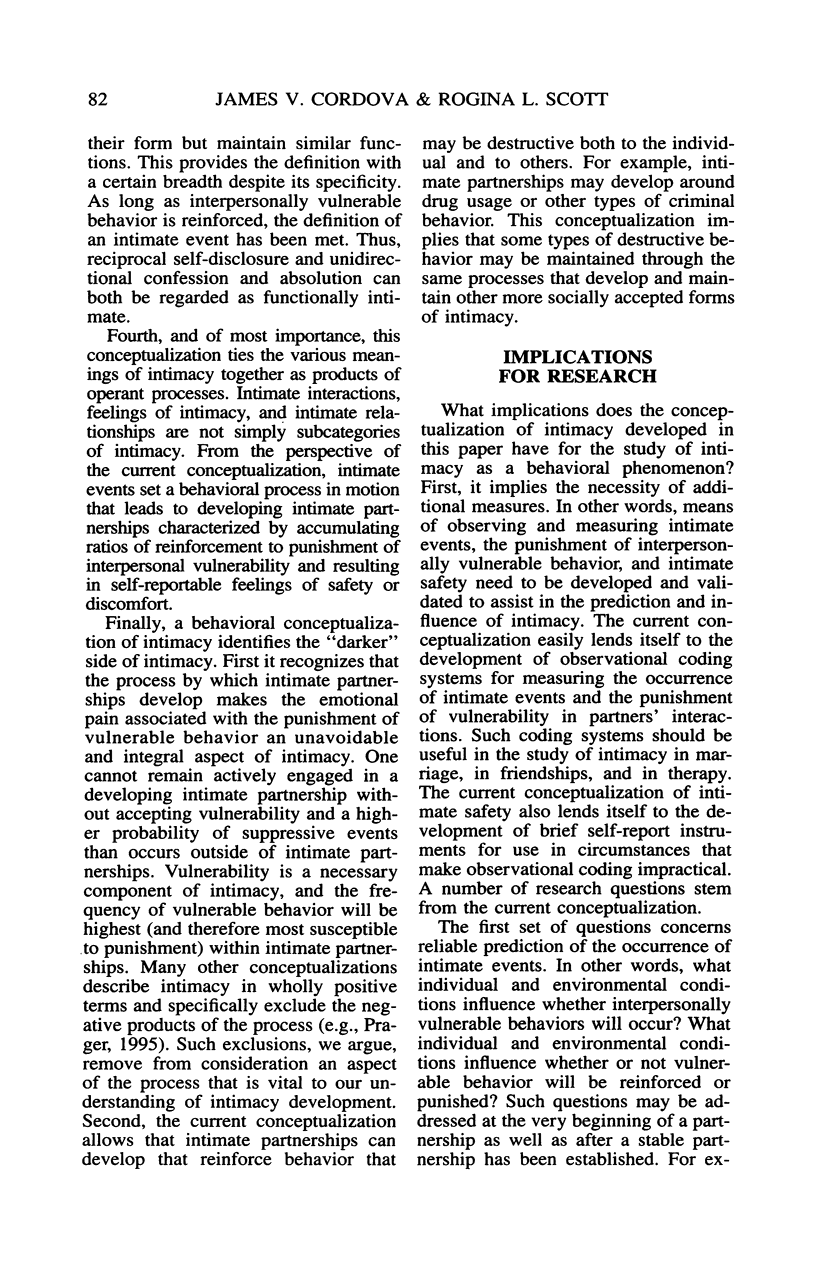
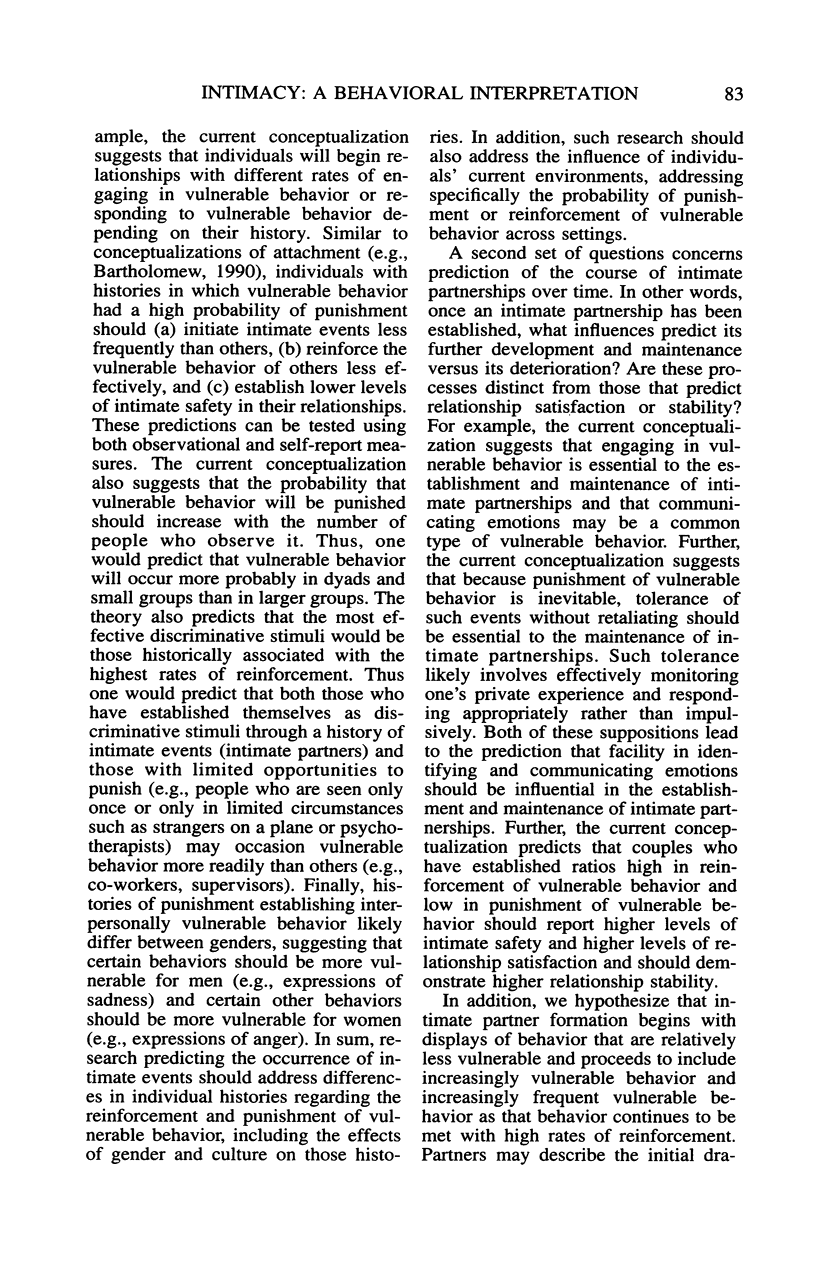
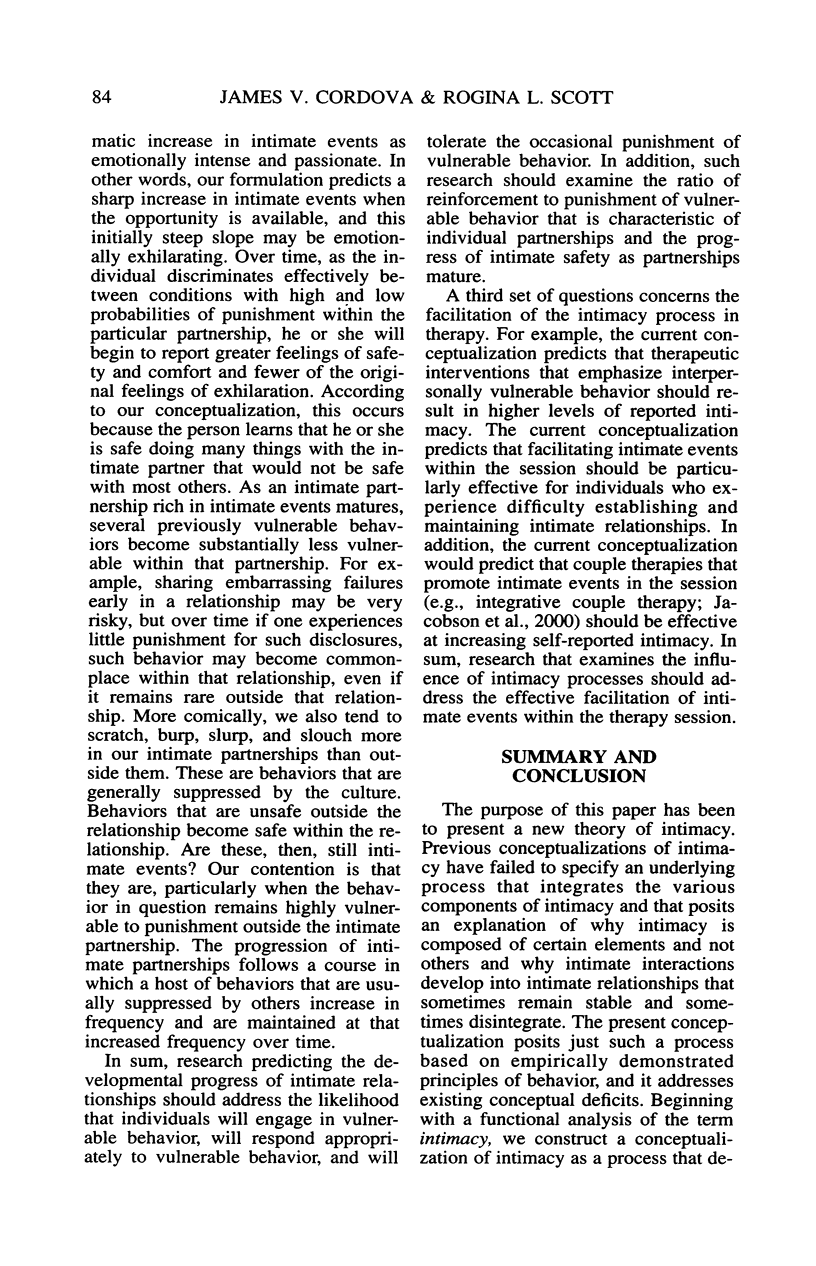
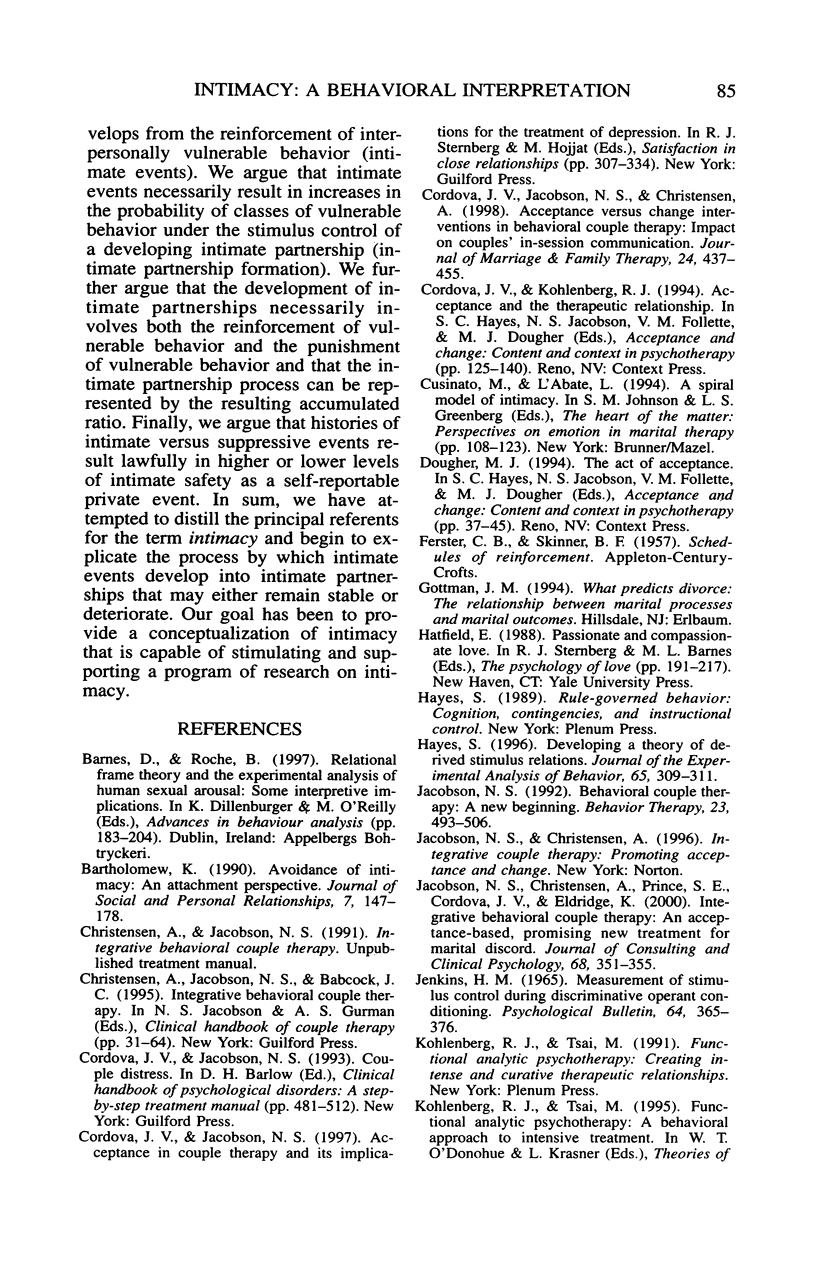
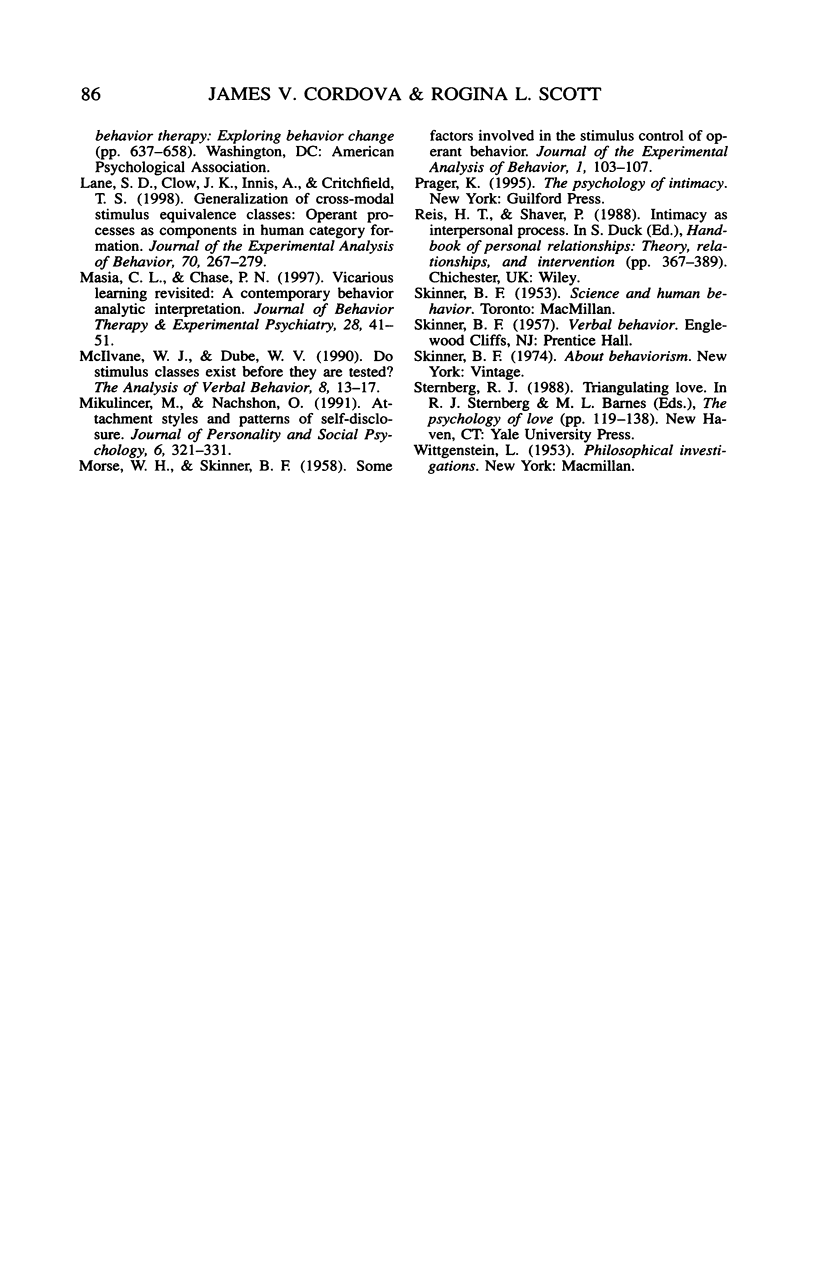
Selected References
These references are in PubMed. This may not be the complete list of references from this article.
- Cordova J. V., Jacobson N. S., Christensen A. Acceptance versus change interventions in behavioral couple therapy: impact on couples' in-session communication. J Marital Fam Ther. 1998 Oct;24(4):437–455. doi: 10.1111/j.1752-0606.1998.tb01099.x. [DOI] [PubMed] [Google Scholar]
- Hayes S. C. Developing a theory of derived stimulus relations. J Exp Anal Behav. 1996 Jan;65(1):309–311. doi: 10.1901/jeab.1996.65-309. [DOI] [PMC free article] [PubMed] [Google Scholar]
- Jacobson N. S., Christensen A., Prince S. E., Cordova J., Eldridge K. Integrative behavioral couple therapy: an acceptance-based, promising new treatment for couple discord. J Consult Clin Psychol. 2000 Apr;68(2):351–355. doi: 10.1037//0022-006x.68.2.351. [DOI] [PubMed] [Google Scholar]
- Jenkins H. M. Measurement of stimulus control during discriminative operant conditioning. Psychol Bull. 1965 Nov;64(5):365–376. doi: 10.1037/h0022537. [DOI] [PubMed] [Google Scholar]
- Lane S. D., Clow J. K., Innis A., Critchfield T. S. Generalization of cross-modal stimulus equivalence classes: operant processes as components in human category formation. J Exp Anal Behav. 1998 Nov;70(3):267–279. doi: 10.1901/jeab.1998.70-267. [DOI] [PMC free article] [PubMed] [Google Scholar]
- MORSE W. H., SKINNER B. F. Some factors involved in the stimulus control of operant behavior. J Exp Anal Behav. 1958 Jan;1:103–107. doi: 10.1901/jeab.1958.1-103. [DOI] [PMC free article] [PubMed] [Google Scholar]
- Masia C. L., Chase P. N. Vicarious learning revisited: a contemporary behavior analytic interpretation. J Behav Ther Exp Psychiatry. 1997 Mar;28(1):41–51. doi: 10.1016/s0005-7916(96)00042-0. [DOI] [PubMed] [Google Scholar]


